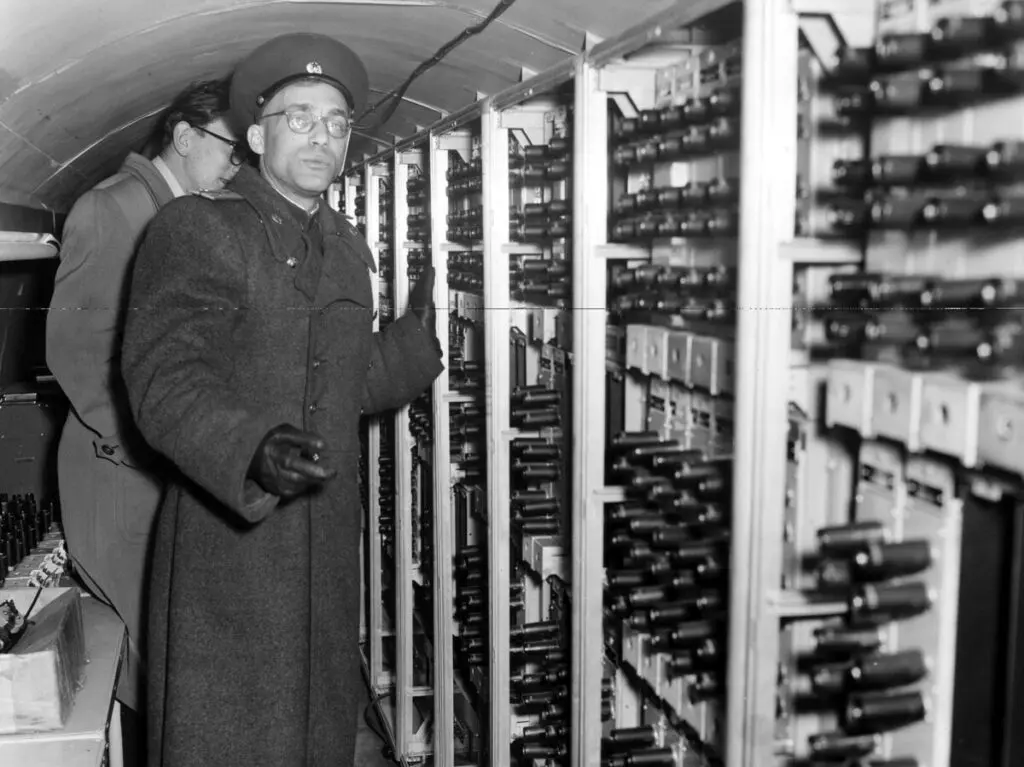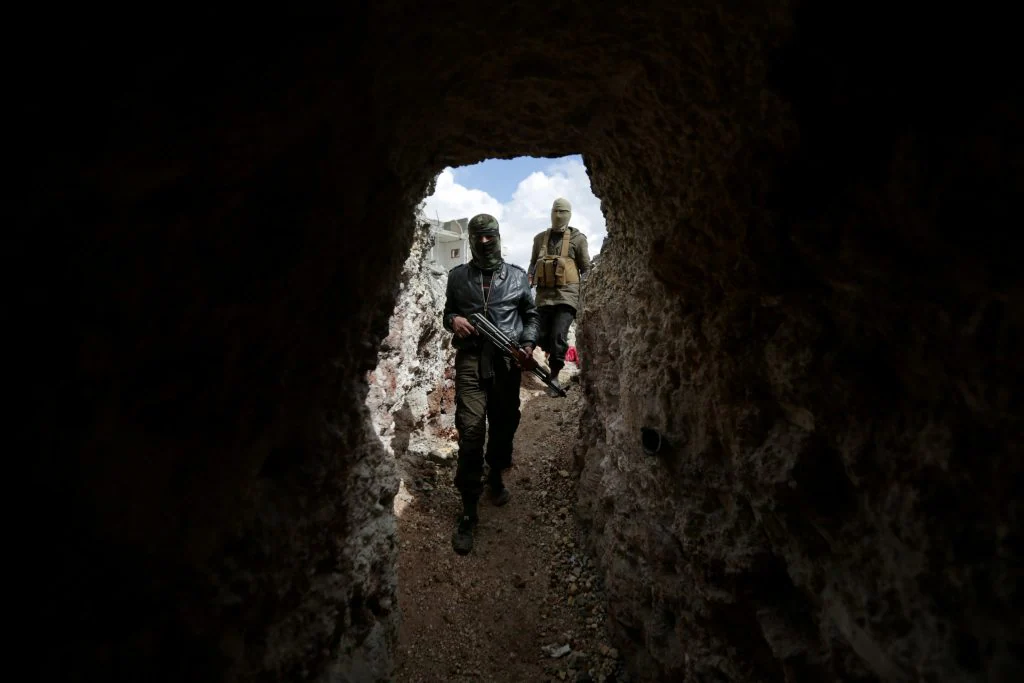Buried Secrets: Tunnelling in Intelligence Gathering and Terrorist Activity
Introduction:
Since the recent Hamas attacks on Israel in October 2023, numerous media articles have dissected the intricate network of tunnels beneath Gaza and how Hamas leveraged them for attacks and hostage-taking in Israeli settlements near tunnel access points. But this isn’t a new concept. In this article, we’ll explore the historical use of tunnels in intelligence, warfare, and terrorism, shedding light on their clandestine roles and the reasons behind their adoption.
The Secrecy of Tunnels: Tunneling in Espionage and Terrorism
The covert world of tunnels has long been exploited by intelligence agencies and the terrorist organizations they oppose. Tunnels offer an exceptional degree of secrecy, making them an ideal choice for various purposes:
• A means of inconspicuous travel
• Secure storage for weapons, funds, and supplies
• A hidden channel for covert communication
• A hidden venue for meeting and planning
Historical Examples:

OPERATION GOLD: Unearthing Soviet Secrets
OPERATION GOLD was a Joint Central Intelligence Agency (CIA) British Secret Intelligence Service (BSIS) operation where a tunnel was constructed under Berlin to tap into the communications landline of the Soviet Army headquarters located in Berlin’s Soviet occupied area.
Tunnel construction began in September of 1954, and took 8 months to complete. After the Second World War, the supply of Soviet intercepted Radio transmissions had dwindled as the Soviet Army began using telephone landlines for most of their secure communications.
Building upon previous successes of telephonic interception of communications using tunnel systems under Vienna, the BSIS (or MI6), under the code name OPERATION SILVER, were able to garner intelligence that eventually helped restore Austrian sovereignty in 1955.
Previous BSIS success with OPERATION SILVER combined with CIA interest in collecting Soviet communications resulted in the joint operation being dubbed OPERATION GOLD.
The CIA were aware that a crucial telephone junction was approximately 2 meters beneath and close to the boarder of the American Sector in West Berlin. The United States Government paid for the excavation and construction of the tunnel and British Government provided the expertise and equipment required to tap into the Soviet telephone lines.
Although the operation resulted in the collection of over 90,000 Soviet communications, OPERATION GOLD was compromised by a BSIS officer, George Blake, who was a mole for Soviet Intelligence.

TALIBAN TUNNELLING: Freeing Militants
https://www.cbsnews.com/news/taliban-tunnels-nearly-500-out-of-afghan-prison/
Information gleaned from the 2011 04 25 article by CBS news shows that in April 2011, about 480 Taliban militants orchestrated a daring escape from Sarposa Prison in Southern Afghanistan using an underground tunnel. This impressive 320-meter tunnel took over 5 months to dig and cleverly bypassed security measures. Suspicion of collusion between the prison guards and the Taliban lingers.
On 2011 04 24, some 480 Taliban militant prisoners escaped from Sarposa Prison located in Southern Afghanistan using an underground tunnel. The tunnel, which was over 320 meters in length, supposedly took more than 5 months to dig and cleverly by-passed several prison security measures.
The militants were whisked away from Sarposa Prison and taken to a house located at the other end of tunnel. Guards did not discover the prison break until 4 am, approximately a half hour after the last Taliban militant prisoner escaped. Collusion between the prison guards and the Taliban was suspected.
A meter wide hole could be seen in the floor of the prison cell where it dropped down one and a half meters. Copies of keys to other cells had been made and facilitated the militant escape by allowing many individual cells to be opened, allowing the militants to escape five at a time.
The entire escape of 480 prisoners took approximately four and a half hours. Once the Taliban militants arrived at the house where the tunnel started, they were taken to other secure locations by vehicles waiting for them.
This was not the first prison break orchestrated by the Taliban at Sarposa prison. In 2008 a Taliban attack on the prison resulted in 900 prisoners being freed. However, this attack involved an assault on Sarposa including suicide bombers on motor bikes and a tanker truck loaded with explosives being detonated at the front while a second bomb opened an escape hole into the back wall of the prison.
The ISIS Labyrinth: The Subterranean Strategy

An article in a 2017 04 14 Washington Post post article describes the labyrinth of tunnels under Mosul and Fallujah which provided Islamic State of Iraq and Syria (ISIS) fighters with a pathway to move with stealth, escape capture and strike quickly without warning.
The tunnels allowed ISIS fighters to lay in hiding and attack and ambush troops from a place of concealment. ISIS fighters used the tunnels to launch and run drones providing them opportunities to gather information on locations and numbers of counterterror forces. When the location of counterterror forces was spotted, ISIS would launch motor rounds or use drones with munitions attached to launch attacks against counterterror forces.
The Islamic State took tools used in Iraqi oilfields and for mining to help dig the tunnels. They also forced captured civilians to assist in digging the tunnels. To avoid being detected by satellite or drones the ISIS fighters hid the dirt in houses located near the tunnels dig sites.
OPERATION NORTHERN SHIELD: The Israeli Response
OPERATION NORTHERN SHIELD is an Israeli military operation that took place from 2018 12 04 to 2019 01 13. Northern Shield was in response to the Hezbollah tunnels found crossing into Israel from Lebanon. In 2013 Israeli Defence Forces (IDF) started searching for tunnels dug by Hezbollah when residents of northern Israel began hearing digging sounds but were unable to find anything.
This situation was similar to previously discovered tunnels dug by Hamas that reached into Israeli territory and thus technical military engineers and Israeli Intelligence units began to investigate the claims and concerns of the northern Israeli citizens.
Many of the military engineers, technical experts and intelligence personnel identified the Hezbollah tunnels and determined a plan for their destruction was needed. There was a big difference between the tunnels made by Hamas and the tunnels dug by Hezbollah. The Hezbollah tunnels were dug from rock and hard terrain and the Hamas tunnels had been excavated from sand and softer material.
Officers in the IDF Combat Engineering Corps were sent to Europe to learn about hard rock excavation. However, to maintain a high level of secrecy regarding the tunnels, the participants were told their participation in this training was simply routine.
In a strange twist of irony, OPERATION NORTHERN SHIELD was launched 2018 12, as the Israeli forces feared that if the operational information were to be leaked, Hezbollah may attempt to kidnap Israeli hostages to use as a deterrence against Israeli aggression or retaliation.
Timeline of OPERATION NORTHERN SHIELD
- 2018 12 04, the IDF discovered a 200-meter-long tunnel running from the town of Metula that extended 37 meters into Israeli territory.
- 2018 12 06, a second tunnel was discovered in the village of Ramyah located near the Israeli / Lebanon border.
- 2019 02 13, the largest and most sophisticated tunnel was announced to be discovered by the Israeli Defence Force. The tunnel sported stairs, a garbage disposal, and a rail system for transporting large and heavy equipment or material. An IDF spokesperson stated that OPERATION NORTHERN SHEILD would be ending.
- 2018 12 16, the IDF discovered a fourth tunnel that they stated was rigged with explosives to prevent anyone from entering it from Lebanon.
- 2018 12 17, Concertina / Razor wire was placed inside tunnels from the Blue line side (or Israel / Lebanese Border) to further prevent anyone from entering or using them.
- 2018 12 19, the United Nation Peace keeping chief confirmed that four tunnels existed and two did in fact cross over into Israeli territory. Several countries condemned the use of the tunnels by Hezbollah and sided with Israel, who urged the United Nations Security Council to both condemn Hezbollah and designate it a terrorist organization.
- 2018 12 25, the IDF stated a fifth tunnel had been discovered and destroyed with explosives. The IDF announced that this was considered to be the last tunnel and that OPERATION NORTHERN SHIELD had been completed.
At the time the 3rd Secretary for Hezbollah, Hassan Nasrallah, declared OPERATION NORTHERN SHIELD an intelligence failure, citing that he was surprised that Israel took as long as it did to find the tunnels in the first place.
The Gaza Tunnels: Hamas’s Underground Arsenal
In a Global News article dated 2023 10 14, The Gaza tunnels are described as a complex network of tunnels running underneath Gaza and since the attack on 2023 10 07, the Israeli forces had begun to target them.
The 2023 10 07 Hamas attack resulted in over 1,300 deaths on the Israeli side of the border of Gaza and 1,500 Hamas militants being killed.
The Gaza Hamas tunnels have also been described as the Gaza Metro, a nod to the underground system of interconnected railways in London, England. Similarly the Gaza tunnels are a vast network used to hide and move covertly in Gaza by Hamas.
The Gaza Tunnels in the south also connect to the Egypt side of the border and allow for weapons and other goods to be smuggled into the Gaza strip.
Hamas has previously used the tunnels to stage attacks against Israel. In an attempt to prevent attacks by Hamas, Israel built a subterranean wall in 2021 in hopes of preventing further use of the tunnels. However, the tunnels are believed to be over 30 meters deep underground.
There is speculation that Hamas is keeping hostages in the tunnels in hopes that Israeli forces will be deterred from attacking the Palestinian territory for fear of harming or killing the hostages.
Palestinian Tunnel Warfare in Gaza
Why the immense effort to build the tunnels is worth it to Hamas?
Having a subterranean network allows Hamas the following:
- A place to stockpile and hide weapons.
- A place from which they can launch attacks in a random and indiscriminate fashion.
- An unseen network that can be used for communications.
- A conduit that allows Hamas to move and hide kidnapped hostages.
- A hidden location for the training and planning of operations.
- An area that allows for undisclosed fast attack and retreat positions.
To keep the entry and exit points hidden, Hamas will place tunnel access points inside houses, mosques or in brush to cover and prevent them from being detected by drones or aerial imaging.
Dimensions and Cost
According to open-source reporting most of the Hamas Gaza tunnels are over 6 feet in height and 3 feet in width. Most have electricity, lighting and some have a form of railway system that allow for the transportation of goods and materials too heavy to carry.
Many of the tunnels are located between 60 to 100 feet deep and it is widely believed that many of the tunnels have improvised explosive devices used as booby traps against Israeli forces.
The estimated cost for the spiderweb like maze of tunnels is between 30 to 90 million dollars consisting of more than 600,000 tons of concrete.
Defensive and Offensive Capabilities
The Gaza Hamas tunnels allow for Hamas fighters, militants, and leaders to seek refuge from Israeli air strikes. Some tunnels are reportedly set up as “security tunnels” where Hamas bureaucrats and leaders and their families are provided routes to escape Israeli shelling and bombardment.
The tunnels also provide an offensive aspect for surprise attacks into Israeli territory. This allows for the taking of hostages, destruction of property and attacks against Israeli military personnel.
On 2023 10 24, Israeli hostage Yocheved Lifshitz was release by Hamas. Lifshitz stated that after being captured she walked two to three hours in the tunnels with other Israeli hostages until they were placed in a large subterranean hall. Lifshitz further described the tunnels having individual rooms that had been cleaned and a mattress placed on the ground for the hostages to sleep.
Effectiveness and Drawbacks of Tunnels for Intelligence and Terrorism
Complacent or allied parties can, and do, assist in keeping the excavation and fortification of the tunnel structures. This is exemplified in the CIA / BSIS OPERATION GOLD, wherein the commencement of the tunnel started in the American section of Berlin. This is also seen in the tunnel excavation used by the Taliban to break out militants as with the Hezbollah and Hamas tunneling systems.
The effort and time needed, not to mention the potential extreme cost, demonstrate a high level of commitment to the endeavour of creating and using tunnelling for covert activities and attacks. This is clearly demonstrated by the estimated amount of money (30 to 90 million) that went into the Hamas Gaza tunnels as well as the time (over 8 months) in the OPERATION GOLD.
Conversely, in the case of the Sarposa prison break, a previous attempt resulted in the loss of several Taliban fighters and suicide bombers. Demonstrating that the use of tunneling can offset costs of the lives of fighters and explosives. Which can be used for other purposes or attacks.
Tunnels have also been shown to provide strategic attack and surveillance sites used against opposing forces. This capacity has been maximized with use of 21st century technology like drones, which can provide additional information and firepower when launched from undisclosed tunnel access points.
There is always a risk of compromising the construction of tunnels, as excavation does not always go unnoticed. So was the case for the northern Israeli residents who were suspicious of the noises they heard which lead to the IDF discovery of Hezbollah tunnels in 2018.
Operations to discover, dismantle and prevent further use of tunnels can be expensive and difficult to keep from being compromised. The case of George Blake informing Soviet Intelligence about OPERATION GOLD as well as the lengths that the Israeli military went through to keep OPERATION NORTHERN SHIELD from being exposed, are clear examples.
Just as opposing forces can use explosives to dismantle or destroy tunnel infrastructure, terrorist organizations can use improvised explosive devices to deter those forces from entering the tunnels in the first place.
The construction and subsequent discovery of a system of tunnels can provide a psychological component for terrorist organizations in the form of future recruitment and propaganda. The sophistication of the tunnels constructed and used, demonstrate a level of engineer accomplishment that, even after they have been discovered, could be used to solicit further recruits to the cause. Additionally, the discovery of the tunnel system can be used to taunt opposing forces, as Hezbollah’s Hassan Nasrallah did regarding OPERATION NORTHERN SHIELD.
Conclusion:
As this article demonstrates, the use of tunnels in covert actions and terrorist activities is an ever-evolving challenge. The few examples provided highlight the fact that the use of tunnels in covert action and terrorist activities is an everchanging game of cat and mouse. But given the recent attacks by Hamas and the large role that the Gaza Hamas tunnels played and continue play in this struggle, we can be assured that this is a technique and tactic that will not be easily done away with.
Do you think tunnels are still being used by intelligence agencies? Do you think that the construction and use of tunnels is an effective tactic? Please feel free to comment and be part of the conversation.

https://shorturl.fm/Uk15n
https://shorturl.fm/yfyQM
https://shorturl.fm/RE3oX
https://shorturl.fm/nPjou
https://shorturl.fm/FiDeE
https://shorturl.fm/bbApW
https://shorturl.fm/cFksJ
https://shorturl.fm/p8xsn
https://shorturl.fm/HsWDQ
https://shorturl.fm/ma4vP
https://shorturl.fm/aSPsm
https://shorturl.fm/otQeJ
https://shorturl.fm/IZc1G
https://shorturl.fm/U0TV9
https://shorturl.fm/dNkMI